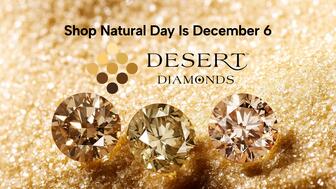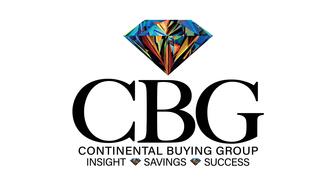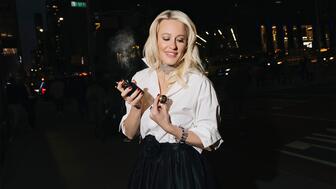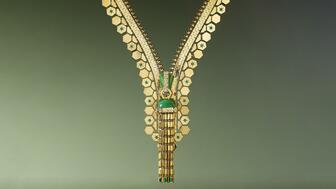Kadet, a 1994 National Jeweler Retailer Hall of Fame inductee, helped grow the family-owned retailer in the Chicago area and beyond.
Which Social Media Platforms Are Best for Jewelers?
Likeable Local’s Mike Farrell says that in order to find the answer, jewelers first need to ask themselves two other questions.

Whether you’re just starting out or are looking to expand your social presence, there quite a few routes you can take.
Many fall into the trap of trying to tackle every social network at once and wind up spreading their efforts too thin. Especially for small business owners, who are likely already wearing many others hat, using your time efficiently on social media is crucial.
So, on which platforms should you be focusing? In order to properly determine the answer, you first need to ask yourself two questions.
1. What kind of products do you sell? A high-end jeweler is going to have a much different target audience than a casual jewelry store. Different demographics have different frequencies on the various platforms and this will affect your social strategy. Also, consider your intended brand voice because each platform lends itself to a particular style of communication.
2. Additionally, it’s also important to consider what your store’s overall goals are before you begin investing time in social media. One of the biggest mistakes we see a lot of small businesses make on social is to move forward without any real plan in place. Determining the objectives of your marketing efforts helps you decide which platforms to focus on because each platform can best be used for different purposes. Are you trying to grow awareness for your brand online? Are you trying to promote specific offers/sales? Or are you trying to drive followers to your physical location?
Let’s begin with the social media juggernaut, Facebook.
By now, it is almost assumed that everyone has a Facebook profile. More importantly for you, it is also assumed that all businesses are now on Facebook. Maintaining an active presence on the platform is vital because it’s currently the most ubiquitous social network with more than 1.5 billion users.
Facebook has powerful advertising capabilities built right into the platform with the ability to create custom audiences and target by interests and demographics.
Facebook is also very useful because it allows for a variety of different functions such as short-form posting, long-form posting, and photo/video sharing. It encompasses most features of other social networks, making it a popular choice among marketers.
In addition, content on Facebook is less time-sensitive than other platforms such as Twitter and Instagram. However, it is largely pay-to-play if you want your followers to see your posts. Also important to consider with
Next, let’s move onto Instagram, which passed Twitter last year in terms of monthly active users.
The platform boasts one of the highest user engagement rates, making it an effective space to build a brand community. Instagram is an especially great platform for businesses that have products that lend themselves to being showcased visually. Restaurants, jewelers and clothing manufacturers are all examples of businesses with visually appealing products that are perfect for Instagram.
However, don’t limit yourself to just pictures or videos of your jewelry. As beautiful as your products are, the ‘Gram is also a great place to humanize your brand by showing off your company culture. This is especially important on Instagram because users on the platform tend to skew younger and these younger consumers value connecting with brands online. Office shenanigans and behind-the-scenes looks can go a long way in putting a face to your business.
One challenging aspect of Instagram for marketing purposes is that the platform does not support links within posts. You are only allowed one link within your bio, which can make it challenging to redirect followers to content on your website or blog. One way around this is to make use of Instagram ads that redirect to an external website. These ads were originally for larger brands, but have recently become more affordable for smaller businesses.
Twitter has recently been suffering an identity crisis of sorts and its user base has started to stagnate. However, this is not to say it’s alright to start ignoring the platform. Twitter remains a great place to receive small bursts of current information and to connect with industry thought leaders. The platforms lends itself particularly well to reaching out to people you may not fully know yet.
Here at Likeable, we connect with people on Twitter all the time and frequently are able to take conversations with prospects into email or Skype.
Twitter is particularly useful for redirecting to external content and you can insert multiple links into a single tweet. The network also has powerful advertising capabilities with the added bonus of the promoted tweets looking very similar to normal tweets.
If you want to maximize your reach on Twitter, it’s recommended that you make use of ads because the lifespan of tweets is so short. Ads will boost your reach, and the platform even gives you estimates of how many link clicks you will receive based on your ad spend.
Similar to Instagram, Twitter is great for fostering an engaged community around your products. It’s a helpful place to find out what people are saying about your business, your competitors and your industry in general. There are also listening tools to help you gather these insights to make better informed decisions moving forward. Finally, Twitter is often used as a customer service platform because of its real-time nature, so make sure you are responsive.
LinkedIn is an interesting network because its audience is more easily defined than other platforms. Billed as the “network for professionals,” LinkedIn can serve a variety of purposes for both businesses and individuals alike.
One of the most powerful aspects of the platform is its networking capabilities. On LinkedIn it’s possible to connect with and recruit users based on industry and common connections. It’s an especially powerful resource for business-to-business companies and can also be used to establish your thought leadership within an industry.
Similar to Facebook, LinkedIn also has a helpful groups feature that can allow you to have private conversations with thought leaders on trending jewelry topics.
If you are not a business-to-business jeweler, you can still certainly find use for the platform as an individual, but as a business-to-consumer jeweler it might be better to initially stick to other the other platforms previously mentioned.
Snapchat
I’ve already outlined my thoughts on Snapchat, but let’s recap (because it’s my still my favorite platform.)
The platform has quickly moved from the fringe of social media relevance to a legitimate platform where the likes of BMW and Hasbro now frequently advertise. Snapchat has deftly figured a way to include paid advertisements within in its app without disrupting the user experience.
Now, for small business purposes the paid advertisements are not within the realm of financial feasibility. However, this is not to say that small businesses cannot find use for the app.
As of last year, more than 400 million snaps were sent daily. With over 25 million users in the United States alone, there is a good possibility that you may have some potential customers frequently using the app (even more likely if your target demographic is skewed younger.)
Especially with the inclusion of the story and chat features, companies are starting to figure out ways to effectively use Snapchat’s organic reach potential.
Snapchat differs greatly from some of the other platforms here because of its innate casual and time-sensitive nature. More so than any other network Snapchat really allows you to be your authentic self.
Snapchat will be most effective for your business if you have a product that’s interesting to show off visually--which all jewelers do--and if you have a younger customer base.
So, which of these social media platforms have you found most useful as a jeweler and why? Let us know in the comments below or tweet us @LikeableLocal.
Mike Farrell is the community manager at Likeable Local’s New York office. He is an avid reader, writer and listener of hip-hop. Connect with him on Twitter, @mikefarrelldude.
The Latest

Don’t let those with December birthdays feel blue. Help them celebrate their month with blue zircon, turquoise, and tanzanite.

The new pink sapphire version of the piece dances with its wearer in the brand’s “Icons After Dark” holiday campaign.

How Jewelers of America’s 20 Under 40 are leading to ensure a brighter future for the jewelry industry.

A choice that’s generated a lot of commentary, Pantone says “Cloud Dancer” marks a fresh start and encourages relaxation and creativity.


The manufacturer’s holiday campaign features a gift guide filled with trending designs and jewelry that can be personalized.

The man was charged with theft, accused of ingesting the necklace while in a jewelry store in Auckland, New Zealand.

Roseco’s 704-page catalog showcases new lab-grown diamonds, findings, tools & more—available in print or interactive digital editions.

The Florida independent expanded its store from 8,000 to 14,000 square feet, fulfilling the vision of its late co-founder, Jim Dunn.

Sponsored by De Beers Group

The classic 5600 series G-Shock has been scaled down to about a tenth of its size, becoming a fully functioning watch ring.

The association’s annual conference and gala will take place Feb. 4, 2026, during the Tucson gem shows.

The January show will include a workshop for jewelry retailers on implementing AI to strengthen their businesses.

Fellow musician Maxx Morando proposed to the star with a chunky, cushion-cut diamond ring designed by Jacquie Aiche.

The retailer, which sells billions in fine jewelry and watches, is suing the Trump administration and U.S. Customs and Border Patrol.

Black Friday is still the most popular shopping day over the five-day holiday weekend, as per the National Retail Federation’s survey.

The historic egg, crafted for Russia's ruling family prior to the revolution, was the star of Christie’s recent auction of works by Fabergé.

The retailer offered more fashion jewelry priced under $1,000, including lab-grown diamond and men’s jewelry.

The eau de parfum is held in a fluted glass bottle that mirrors the decor of the brand’s atelier, and its cap is a nod to its “Sloan” ring.

Vivek Gadodia and Juan Kemp, who’ve been serving as interim co-CEOs since February, will continue to lead the diamond mining company.

In addition, a slate of new officers and trustees were appointed to the board.

Witt’s Jewelry in Wayne, Nebraska, is the organization’s new milestone member.

Laurs is the editor-in-chief of Gem-A’s The Journal of Gemmology and an expert on the formation of colored gemstone deposits.

The man, who has a criminal history, is suspected of being the fourth member of the four-man crew that carried out the heist.

The single-owner collection includes one of the largest offerings of Verdura jewels ever to appear at auction, said Christie’s.

Michael Helfer has taken the reins, bringing together two historic Chicago jewelry names.

The guide features all-new platinum designs for the holiday season by brands like Harwell Godfrey, Ritani, and Suna.


























